
Completed projects
 Projekt title: „TERRA PRETA” Combined application of biochar and microbial inoculant for deteriorated soils
Projekt title: „TERRA PRETA” Combined application of biochar and microbial inoculant for deteriorated soils
Funding Programme: Norwegian Financial Mechanism 2009-2014, Green Industry Innovation Programme
Project Identification Number: HU09-0029-A1-2013
Project duration: 2014. 07. 01 – 2016. 10. 31.
Project type: Consortial
Project partners:
BioFil Microbiological, Biotechnological and Biochemical Ltd (Project Promoter)
Budapest University of Technology and Economics (BME) (Partner)
Research Institute for Soil Science and Agricultural Chemistry (RISSAC), HAS (Partner)
Norwegian Institute for Agricultural and Environmental Research (Donor project partner)
Summary:
The Terra Preta Project aimed at amending acidic sandy soils with biochar and to apply biochar as carrier of microbial soil inoculum targeting increase in crop yield. BME and RISSAC have studied for several years the potential applicability of wastes for remediation and amendment of contaminated and degraded soils (SOILUTIL project). Biochar application to soil is considered to be a sustainable and environmentally efficient option. Further to its stable carbon content having positive effects on soil mechanical, geobiochemical and habitat function, biochar has high bioavailable element content supplying the necessary macro- meso- and microelements to the soil. Biochar offers better environment for the microbial inoculum applied together with the biochar, so that in some cases one may note clear synergistic effect. The biochars and the amended degraded soils have to be evaluated and combined individually and on a “char on char” basis. http://enfo.agt.bme.hu/drupal/node/13075
::::::::::::::::::::::::::::
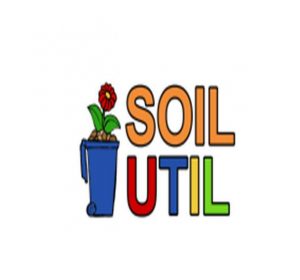 Project title: “SOILUTIL” Soil amelioration by innovative waste utilisation technologies
Project title: “SOILUTIL” Soil amelioration by innovative waste utilisation technologies
Funding Programme: National Technology Programme, A4 Liveable, Sustainable Environment
Project Identification Number: TECH_09-A4-2009-0129
Project duration: 2009. 09. 01 – 2014. 01. 31.
Project type: Consortial
Project partners:
.A.S.A. Hungary Ltd (Consortium Leader)
Weprot Ltd. (Partner)
Budapest University of Technology and Economics (Partner)
Research Institute for Soil Science and Agricultural Chemistry (RISSAC), HAS (Partner)
Summary:
Management and disposal of various waste materials produced as a result of human activity is one of the actual problems to be solved worldwide. The ideal solution gives an efficient waste utilisation alternative.
The SOILUTIL project had planned to ameliorate degraded/contaminated soil, improve the stability of swampy, instable soil and sustain soil quality on the long term developing non-hazardous waste utilisation technologies with the help of a modern engineering toolbox.
The SOILUTIL project planned scale up experiments to develop innovative technological solutions for environmental friendly utilisation of deposited, non-hazardous wastes. Four technologies were demonstrated in field experiments and these were subject to technology verification. The know-how of these technologies was worked out. The technological solutions were developed in scale up experiments having the following targets in accordance with the objectives of the project: waste pre-treatment technological procedures, waste utilisation technologies targeting compensation of soil degradation, cultivation medium developing technologies, technologies for geotechnical constructions and elements.
Simultaneously with technology development the project developed a software in support of efficient waste utilisation. The software is based on the data of a dynamically developing database set up within the project.
The Research and Development activity planned in the Project brings innovation in the field of soil amelioration utilising wastes as compared to the national patented waste utilisation solutions. The innovation is that waste utilisation is approached not only from the waste point of view but also from the soil point of view taking into account the objectives of the EU Soil Framework Directive.
With development and implementation of the planned technologies, software and database the project contributed to the “Sustainable waste management” and to the preservation of valuable cultivation media. http://soilutil.hu/en
::::::::::::::::::::::::::::::::

Project title: “CD FILTER” Preparation of nanoporous filter systems to bind xenobiotics and their application for reuse of purified waste water
Funding Programme: National Technology Programme, A4 Liveable, Sustainable Environment
Project Identification Number: TECH_08-A4/2-2008-0161
Project duration: 01. 01. 2009 – 31. 01. 2012
Project type: Consortial
Project partners:
CycloLab Cyclodextrin R&D Laboratory Ltd (CYCLOLAB) (Consortium Leader)
Bay Zoltán Foundation for Applied Research, Institute for Materials Science and Technology, Department of Polymer Composites (BAYATI)
Budapest University of Technology and Economics, Group of Environmental Microbiology and Biotechnology (BME)
Eötvös Loránd University, Institute of Sciences, Cooperative Research, Centre for Environmental Sciences (ELTE CRCES)
ORGANICA Environmental Ltd. (Organica)
Summary: Scientific literature uses the term “emerging pollutant” for recently recognized hazardous pollutants. These materials are not listed among official registries about pollutants, legal regulation does not deal with them, although they represent a very high risk factor, because they usually are not degraded in natural environment, they accumulate in living organisms (POP, Persistent Organic Pollutants or PBT Persistent Bio-accumulative Pollutants). Most of these chemicals belong to pharmaceuticals and cosmetics (PPCP, Pharmaceutical and Personal Care Products): human- or animal medicine, perfumes, cosmetics, sun protection, nutritional supplements (for example vitamins) and pesticides that appear in surface water. These micro-pollutants usually get into the environment in diffuse form, in the air (for example PAH compounds, dioxins), materials used in agriculture (pesticides) into the ground and ground water. A vast amount gets directly into the ground and surface water (for example pharmaceutical residue) from wastewater pipes and from wastewater treatment plants. As these materials appear in our drinking water as well, they are threatening the ecosystem and humans.
The objective of the project was to develop new, cyclodextrin-containing filters for three different applications:
- Development of cyclodextrin containing sampling filter units for the monitoring of bioactive micro-pollutants.
- Filters applicable for the post-purification of drinking water in households.
- Development of an innovative, filter unit containing wastewater treatment process, by which xenobiotics and residual pharmaceuticals, other POP compounds, and also numerous organic micropollutants can be removed from the pre-purified wastewater.
::::::::::::::::::::::::::::::::
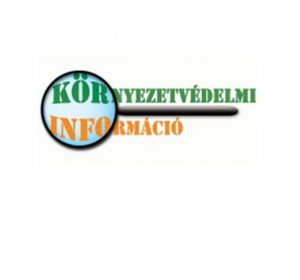
Project title: “ENFO” Dynamic information system for environmentally efficient and environment conscious decision making
Funding Programme: New Hungary Development Plan, Central Hungary Operative Program (KMOP)
Project Identification Number: KMOP-3.3.4 C-2008-0005
Project duration: 11. 11. 2008 – 01. 27. 2011
Project partners:
Budapest University of Technology and Economics, Department of Environmental Biotechnology and Food Science, Environmental Microbiology and Biotechnology Research Group (Lead partner)
Akusztika Engineering Office Ltd. www.akusztika.com
Aqua Concorde http://www.aqua-concorde.hu
DigiKom Ltd. http://www.digikom.hu
FEBE ECOLOGIC Environmental Consulting and Training Office
RISSAC Research Institute for Soil Science and Agricultural Chemistry of the Hungarian Academy of Sciences, http://www.mta-taki.hu
Weprot Ltd. http://www.weprot.hu
Summary: ENFO is an on-line developed information system for environmentally efficient and environment conscious decision making. The developed system informs the problem holder about data and correlation between environmental elements, chemical substances, pollution and environmental damages, land-use, effects and impacted elements and activities.
The ENFO project provided systematic information on the legal background, environmental monitoring, risk and life cycle assessment, risk reduction methods and technologies demonstrated with focus on the central area of Hungary. The Glossary contains explanations in the field of environmental law, environmental sciences and the relevant technical background.
If you navigate in the Database you can get acquainted with traditional and innovative methods able to measure and assess the actual condition of the environment inclusive of its deterioration or you get to know technologies able to maintain the environment healthy or technologies to remediate it.
Clicking on the Photos button you are given a quick and expressive overview of the areas of interest covered by the ENFO project. The Maps visualise GIS data layers and other environmental data types and help in locating environmental companies, institutions providing information relevant to the respective spot. If you click on the Decision Support (DST) button and you select a specific problem within it, you will be guided through the steps to be taken both in terms of the legal or scientific background.
E-learning gives you an insight into the scientific and practical basis of the modern environmental engineering.
The content of the ENFO webpage is arranged in a matrix form combining the environmental elements and their deterioration with the relevant examination methods and remediation, cleaning, treatment procedures. The matrix itself is a table having the environmental elements and their deterioration along its horizontal line and the methods and technologies along the vertical line. This matrix-like arrangement can be found under the Photos and E-learning menus. http://enfo.agt.bme.hu/drupal/en/node/4
::::::::::::::::::::::::::::::::
 Project title: MOKKA – Innovative Decision Support Tools for Risk Based Environmental Management in Hungary
Project title: MOKKA – Innovative Decision Support Tools for Risk Based Environmental Management in Hungary
Funding Programme: Hungarian National R&D Program
Project Identification Number: NKFP3-00020/2005
Project duration: 15. 09. 2005 – 15. 12. 2008
Project type: Consortial
Project partners:
Aqua Concorde Water Analysis and Water Technology Ltd. (Lead partner)
Budapest University of Technology and Economics (BME)
Research Institute for Soil Science and Agricultural Chemistry of the Hungarian Academy of Sciences (RISSAC)
Vituki Kht. Water Research Institute
Vituki Consult Co.
CycloLab Cyclodextrin R&D Laboratory Ltd (CycloLab)
DigiKom Ltd. (Digikom)
Association of Environmental Enterprises (KSZGYSZ)
Summary: The two main facets of Environmental Risk Management (ERM) include Environmental Risk Assessment (ERA) and Risk Reduction (RR). Both ERA and RR use innovative integrated methodologies and technologies. The objectives of the project were:
- to provide more chance for Risk Based Environmental Management in Hungary
- to cooperate with all the relevant European projects (EUGRIS, EURODEMO, TESTNET, NICOLE)
- to collect all existing information on modern Decision Support Tools (DST)
- to establish a user-friendly DST for Hungarian and European end-users
- to increase trust in innovation
- to support the market entry of innovative methods/technologies
- to establish the basis for continuation of the MOKKA database
- to develop innovative Environmental Risk Assessment methods
- to develop innovative Remediation technologies for Risk Reduction
- to control, verify and validate the new methods
The Risk Based and Effect Based approach is essential not only for the Risk Management itself, but also for its main supporters: environmental monitoring and legal background. The practical implementation of the innovative testing methods and remediation technologies is slow. A deep virtual gap exists between the scientific-technical opportunities and the actually practiced methodologies The „Death Valley” is even more unbridgeable in Hungary. Most innovative methods/technologies are not put into practice, but disappear in the „Death Valley” after funding and demonstration. MOKKA aimed to support the survival of innovative Risk Assessement and Risk Reduction methods and their utilisation by the potential endusers.
http://www.mokkka.hu/index.php?lang=eng&body=mokka
::::::::::::::::::::::::::::::::
![]() Project title: „EURODEMO” European Platform For Demonstration Of Efficient Soil And and groundwater remediation technology
Project title: „EURODEMO” European Platform For Demonstration Of Efficient Soil And and groundwater remediation technology
Funding Programme: 6th EU RT&D Framework Programme
Project Identification Number: EuroDemo 003985
Project duration: 01. 01. 2005 – 31. 12. 2007
Project type: Co-ordination Action
Project partners: 24 EU partner, service providers (SMEs), research organisations, and public organisations, led by the Austrian Federal Agency, Umweltbundesamt.
Budapest University of Technology and Economics, Department of Environmental Biotechnology and Food Science, Environmental Microbiology and Biotechnology Research Group (BME) (Partner)
Summary: The EURODEMO Project aimed to be the principal European co-ordinator of soil and groundwater remediation technology demonstrations by:
- preparing a detailed database of remediation projects demonstrating “new” remediation technologies;
- creating a database of funding resources available for demonstration projects;
- working to reduce the barriers which hamper the use of promising soil and groundwater remediation technologies; and
- promoting the harmonisation of quality criteria for the reporting of soil and groundwater remediation demonstration projects.
http://www.eurodemo.info , http://www.eurodemo.eugris.info/
::::::::::::::::::::::::::::::::
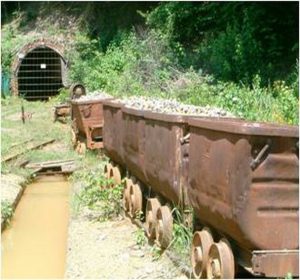
Project title: „BANYAREM” Risk Reduction of Diffuse Pollution of Mining Origin
Funding Programme: Economic Competitiveness Operative Programme (GVOP)
Project Identification Number: GVOP-3.1.1.–2004-05-0261/3.0
Project duration: 01. 01. 2005 – 31. 12. 2007.
Project type: Consortial
Project partners:
Budapest University of Technology and Economics (BME) (Lead partner)
Research Institute for Soil Science and Agricultural Chemistry of the Hungarian Academy of Sciences (RISSAC)
MECSEK-ÖKO Environmental Company
Tatai Environmental Company
Summary: The BANYAREM Hungarian Research and Development Project had the aim to develop a complex risk management approach to diffuse and residual pollution of mining origin. Risk management includes a tiered risk assessment procedure and the selection, testing and application of the best possible remediation option to reach the set risk-based target values.
Diffuse pollution requires new strategy in risk management. The risk-based management concept includes: 1. a tiered, GIS based Risk Assessment methodology, developed on catchment scale basis and 2. risk-based planning and selection of the remediation concept and technologies
::::::::::::::::::::::::::::::::
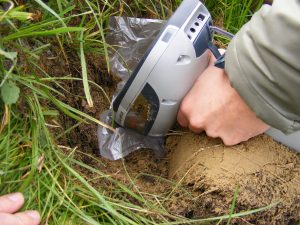
Project title: „LOKKOCK” Development of novel soil testing methods in support of site-specific risk assessment
Funding Programme: Economic Competitiveness Operative Programme (GVOP)
Project Identification Number: GVOP-3.11-2004-05-0257/3.0
Project duration: 01. 01. 2005. – 31. 12. 2007.
Project type: Consortial
Project partners:
Budapest University of Technology and Economics (BME) (Lead partner)
Research Institute for Soil Science and Agricultural Chemistry of the Hungarian Academy of Sciences (RISSAC)
Cyclolab Cyclodextrin Research and Development Ltd (CYCLOLAB)
Summary „LOKKOCK” Development of novel soil testing methods in support of site-specific risk assessment
The Project was focused on the development of innovative soil testing methods that support site-specific risk assessment of polluted sites.
The main aim of the work was to develop and apply physico-chemical analyses, biological and ecotoxicity testing methods to soil, DNA soil testing procedures and to forecast the ecological effects of the contaminant in the soil and to determine the site-specific quantitative risk.
The integrated use of the developed methods assisted in mapping of polluted areas, forecasting and measuring the ecological effect and site-specific risk of the contaminants, providing data on the pollution, bioavailability, contaminant mobility, bioaccumulation and food chain effects.
Therefore, the developed integrated methodology and the related risk assessment procedure was able to support environmental decision making in environmental risk management.
Three complementary test methods were developed and implemented:
- Physical-chemical methods for quantitative and qualitative determination and characterisation of toxic metals and organic contaminants, determination of partition and contaminant transport.
- Biological and DNA techniques for Qualitative and Quantitative characterisation of the members of the ecosystem.
- Direct soil contact and DNA toxicological tests to measure the effect of the contaminated environmental samples.
::::::::::::::::::::::::::::::::
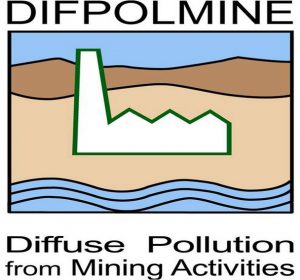
Project title: „DIFPOLMINE” Diffuse pollution from mining activities
Funding Programme: EU Life
Project Identification Number: LIFE 02 ENV/F/000291
Project duration: 01. 10. 2002 – 31. 12. 2006
Project type: Demonstration project
Project partners:
ADEME, France, Agence de l’Environnement et de la Maitrise de l’Energie, France
IRH Génie de l’Environment, France
Limburgs Universitair centrum, Belgium
Budapest University of Technology and Economics
Project title: „DIFPOLMINE” Diffuse pollution from mining activities
Funding Programme: EU Life
Project Identification Number: LIFE 02 ENV/F/000291
Project duration: 01. 10. 2002 – 31. 12. 2006
Project type: Demonstration project
Project partners:
ADEME, France, Agence de l’Environnement et de la Maitrise de l’Energie, France
IRH Génie de l’Environment, France
Limburgs Universitair centrum, Belgium
Budapest University of Technology and Economics
Summary
The Difpolmine project aimed to reduce pollutant flows through both water and air in the area of the former Salsigne and Combe du Saut mines. It planned to develop a new cleaning system that would use, but also go beyond traditional cleaning treatments of excavation, confinement and solidification. In particular, it sought to optimise water management systems in the area and investigate the feasibility of an adapted soil phytostabilisation methodology to minimise residual and diffuse pollution and its subsequent impact. Phytostabilisation consists in using plants which are able to contain, degrade or eliminate pollutants such as metals and pesticides from the medium in which they are contained. Whilst the project looked to demonstrate the applicability of this technique to the specific conditions of the project area in France, it also aimed to prove its transferability to a different mining site in Hungary: a closing zinc and lead mine at Gyöngyösoroszi. It thus hoped to provide an example and source of information for managers of metal-polluted sites in a range of countries and sites. The project contributed to the development of a full treatment plan for the Gyöngyösoroszi mine site in Hungary, based on a study of the adaptation of the project methodology to its particular characteristics. This shows the potential for use of adapted versions of this methodology across various sites around Europe.
Project Work at the Hungarian demonstration site
The postmining activities at the Hungarian site required the management of both the point and diffuse sources. The main environmental risks were related to the mobile Cd and Zn content of the mine wastes, surrounding soils and transported sediments, endangering the surface waters. The toxic metals originated from the exploited sulphide ore veins hosted in andesite rocks. 1–3 pH leachate was produced around the waste rock heaps due to the complex chemical and biological oxidation of the pyrite containing material in contact with the rainwater and runoff. A complete Environmental Risk Management methodology was worked out. The approach was „GIS based” and „catchment scale”, using a three tiered, iterative Environmental Risk Assessment methodology and development of a combined chemical and phytoremediation technology, able to reduce mobility, biological availability of toxic metals, providing long term reduction of toxic metal emission and transport via any pathway. http://www.eugris.info/DisplayProject.asp?p=4512


